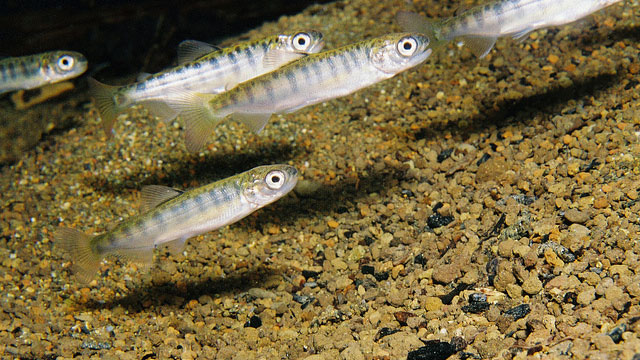Conservation groups, fishing organizations and biologists have been working tirelessly for decades to protect California’s trout and salmon. They have restored floodplains where juveniles find food and shelter, are arranging to remove obstructive dams from the Klamath River and are constantly badgering water agencies to maintain suitable flows in important spawning streams.
But a new report released Tuesday suggests their efforts may be largely for naught. Three-fourths of California’s native species and subspecies of salmonids may be extinct within 100 years, according to biologists at UC Davis and the watershed advocacy group California Trout. In their study, “State of the Salmonids II: Fish in Hot Water,” the authors warned that climate change impacts and the severe degradation of habitat of wild rivers that continues to this day could extinguish almost half of California’s 32 types of native salmon and trout within 50 years.
Maintaining populations of wild salmon and trout is important since it essentially requires maintaining healthy sources of clean, cold water, which is good for much more than just fish. “Resilient fish populations indicate healthy waters, important for drinking water, agriculture, commerce and the health of people and the environments in which we live,” the report notes. “Declining fish populations indicate degraded waters, which threaten the health and economic well-being of all Californians.”
According to the report, the most threatened of California’s native salmonids are the southern steelhead, the winter-run Sacramento River Chinook salmon and the Central California coho salmon. The bull trout, last seen in California in the McCloud River in 1975, is already locally extinct. The coastal rainbow trout, the biologists said, may be California’s only native salmonid to survive for the long haul in any abundance.
The scientists wrote that agricultural demands for river water, population growth and alteration of the San Francisco Bay and Delta ecosystem are major factors affecting salmonids’ long-term survival odds. Fish hatcheries that boost catchable numbers of salmon and steelhead but dilute native species’ gene pools are also problematic. Wildfires, which are getting bigger and more frequent, also pose a threat to mountain trout populations.
